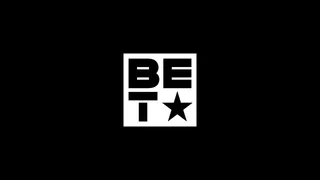March On Washington Anniversary

1 / 17
March for Freedom - On Aug. 28, 1963 more than 2,000 buses, 21 special trains, 10 chartered airliners and countless cars converged on Washington. Crowd estimates ranged from 200,000 to 300,000. It was the largest demonstration ever seen in the nation's capital.

2 / 17
March for Freedom - An estimated quarter of a million people — about a fourth of whom were White — marched from the Washington Monument to the Lincoln Memorial in what turned out to be both a protest and a communal celebration. The heavy police presence turned out to be unnecessary, as the march was noted for its civility and peacefulness.

3 / 17
March for Freedom - The stated demands of the march were the passage of meaningful civil rights legislation; the elimination of racial segregation in public schools; protection for demonstrators against police brutality; a major public-works program to provide jobs; the passage of a law prohibiting racial discrimination in public and private hiring; a $2-an-hour minimum wage; and self-government for the District of Columbia, which had a Black majority.

4 / 17
March for Freedom - The march was initiated by A. Philip Randolph, international president of the Brotherhood of Sleeping Car Porters, president of the Negro American Labor Council, and vice president of the AFL-CIO; and sponsored by five of the largest civil rights organizations in the United States.

5 / 17
March for Freedom - Outright opposition came from two sides – White supremacist groups and Malcolm X. He called it the "Farce on Washington," and members of the Nation of Islam who attended the march faced a temporary suspension.
ADVERTISEMENT

6 / 17
March for Freedom - President Kennedy originally discouraged the march for fear that it might make Congress vote against civil rights laws in reaction to a perceived threat. Once it became clear that the march would go on, however, he supported it.

7 / 17
March for Freedom - Young participants chanted slogans and sang along Constitution Avenue to the Lincoln Memorial.

8 / 17
March for Freedom - Leaders of the march locked arms and moved along Constitution Avenue. A. Philip Randolph is at right, and Roy Wilkins, executive secretary of the NAACP, is second from right. The Rev. Martin Luther King, Jr., is seventh from right.

9 / 17
March for Freedom - Participants jammed the area in front of the Lincoln Memorial and both sides of the Reflecting Pool. Demonstrators are massed at the pool all the way back to the Washington Monument.

10 / 17
March for Freedom - Demonstrators are seen here waiting for the start of the ceremonies.
ADVERTISEMENT

11 / 17
March for Freedom - Celebrities, including Burt Lancaster, Harry Belafonte and Charleton Heston (pictured left to right), were also part of the historic day.

12 / 17
March for Freedom - People gathered in the shade and dipped their feet into the reflecting pool to cool off during the march, while waiting to hear featured speakers.

13 / 17
March for Freedom - John Lewis (now a U.S. congressman from Georgia) represented the Student Nonviolent Coordinating Committee, which emerged from King's Southern Christian Leadership Conference. Lewis' speech criticized how little Kennedy's civil rights bill had done to protect southern Blacks and civil rights workers under attack in the Deep South. While he toned down his comments under pressure from others in the movement, his words still stung.

14 / 17
March for Freedom - Televised live to an audience of millions, the march provided dramatic moments, most memorably King "I Have a Dream" speech and the unexpectedly large crowd that was on hand to witness it.

15 / 17
March for Freedom - Pictured between the vast columns of the Lincoln Memorial and an American flag, King delivers his historic keynote speech at the conclusion of the March on Washington. King's words inspired millions and became a landmark statement of the Civil Rights Movement.
ADVERTISEMENT

16 / 17
March for Freedom - Marchers cheered after King's speech. In addition to reaching the live audience of more than 200,000, the speech was aired on television and published in newspapers.
